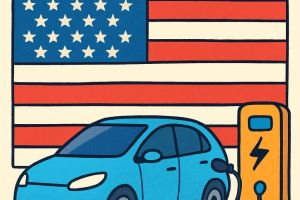
Although the uncertainty of the USA-imposed tariffs on exports and its knock-on effect are still playing out, local production shows signs of decline with imported vehicles on the rise.
In 2024, the US was the South African automotive industry’s second largest single country trading partner with total trade reaching a value of R50.75 billion, consisting of R28.67 billion of vehicle and automotive component exports and R22.08 billion of vehicle and automotive component imports.
The report, however, simply gives a statistical overview of vehicle sales, export and import statistics from 2016 up to and including 2024, and the first quarter of 2024 compared to the same period for 2025.
Some key features for the second quarter of 2025 to take note of:
- Aggregate industry employment as of 30 June 2025 totalled 32 426 workers, reflecting an increase of 217 jobs compared to the 32 209-industry head count as at the end of March 2025.
- Aggregate new vehicle sales during the second quarter 2025 recorded an increase of 17.4% compared to the corresponding quarter 2024 and a decrease of 6.4% compared to the first quarter 2025.
- New energy vehicle (NEV) sales of 21 industry brands decreased by 10.8% from 4 122 units in the second quarter 2024 to 3 678 units in the second quarter 2025.
- Average industry capacity utilisation levels during the second quarter 2025 reflect the impact of supply chain disruptions owing to ongoing port delays, although easing, along with domestic market affordability dynamics, and an uncertain export environment.
- Aggregate capital expenditure by the major light vehicle manufacturers in 2024 amounted to R7.3 billion, linked to new-generation model investments.
- South Africa’s global vehicle production market share decreased from 0.67% in 2023 to 0.65% in 2024, although its global vehicle production ranking improved from 22nd to 21st in view of the poorer performance by Italy dropping below South Africa in 2024.
- Second quarter 2025 domestic vehicle production reflected a decrease of 3.9% compared to the corresponding quarter 2024.
- Vehicle exports decreased by 3.6% in the second quarter 2025 compared to the corresponding quarter 2024 owing to a notable decrease in exports to North America, in particular the US market.
- South African vehicle production decreased by 5.2%, from 632,362 units in 2023 to 599,754 units in 2024, exceeding the global year-on-year decrease in global vehicle production of 1.0% in 2024.
- South Africa had a vehicle parc (number of registered vehicles) of 13.36 million at the end of 2024, of which 7.95 million, or 59.5%, comprised passenger cars.
In view of the inevitable transition toward EVs in major export regions, it is imperative for South Africa to accelerate the implementation of NEV-friendly policies or risk losing its edge in the global automotive manufacturing sector.
Progressive automotive policy and flexibility to include alternative vehicle technologies in its policy framework, such as hybrids and plug-in hybrids, as well as demand-side support for consumers to stimulate NEV sales, remain highly relevant in future-proofing South Africa’s vehicle production base to ensure that the country remains part of the global supply chain.
Vehicle exports decreased by 3.6% in the second quarter 2025 compared to the corresponding quarter 2024 owing to a notable decrease in exports to North America, in particular the US market. On 3 April 2025 US President Trump announced sweeping tariff hikes, notably under the revived Section 232 trade measures, of 25% on vehicles and parts exported to the US.
South Africa’s vehicle exports to the US previously enjoyed tariff-free access under AGOA and the sudden imposition of these duties significantly alters market access conditions. South Africa’s and all other markets’ automotive exports to the USA will now face material cost disadvantages, raising concerns about pricing competitiveness and profitability for multinational OEMs operating domestically. The Eastern Cape, which led with vehicle production and exports in 2024 has already seen a marked decrease in passenger car production and exports during second quarter 2025, amounting to 29.7% and 31.9%, respectively, compared to the corresponding quarter of 2024.
|
2020 |
2021 |
2022 |
2023 |
2024 |
Q2:2024 |
Q2:2025 |
% change
Q2:2025/
Q2:2024 |
Europe |
197 355 |
229 672 |
255 709 |
301 639 |
295 762 |
76 619 |
79 588 |
+3.9% |
North America |
9 463 |
7 981 |
21 684 |
20 910 |
25 554 |
9 574 |
1 562 |
-82.7% |
Asia |
29 440 |
24 170 |
35 154 |
35 015 |
29 265 |
6 796 |
4 638 |
-31.8% |
Africa |
17 127 |
21 994 |
22 769 |
25 596 |
25 916 |
5 895 |
7 792 |
+32.2% |
Australasia |
13 698 |
10 620 |
12 389 |
12 483 |
10 875 |
3 177 |
4 199 |
+32.2% |
Central America |
3 156 |
3 045 |
2 759 |
2 952 |
2 593 |
695 |
1 429 |
+105.6% |
South America |
1 188 |
706 |
1 527 |
1 214 |
879 |
304 |
159 |
-47.7% |
TOTAL |
271 427 |
298 188 |
351 991 |
399 809 |
390 844 |
103 060 |
99 367 |
-3.6% |









